The Bath Two Tunnels Greenway wasn’t something we knew about before arriving in Bath. It was thanks to a couple of helpful suggestions on Twitter that we came to find out about it. On reading more about the route, it sounded perfect for us and wasn’t too far from where we were staying.
The Bath Two Tunnels Greenway is a 13-mile walking and cycling loop, featuring the UK’s longest cycling and walking tunnel. Along the route, it takes in the two tunnels of course, as well as the Tucking Mill Viaduct and Dundas Aqueduct on the Kennet & Avon Canal, before finishing in Bath.
The second of the route with the two tunnels was originally part of the Somerset & Dorset Joint Railway, another of the many railway lines to get the chop as part of the Beeching cuts in 1966. It remained disused, until work started in 2010, with the path opening in 2013.
Somerset & Dorset Joint Railway
Starting from our holiday home, we cycled over to the start of the route for us, on Bellotts Road, not far from the A36. There was a bit of a detour prior to that, where I took us into and across town by mistake, but I’ll skip over that!

At this point, we joined the path of the old trackbed of the Somerset and Dorset Railway and soon pass over Dartmouth Ave on what looks like a relatively new bridge. The path at this point is smooth and wide, with a sealed surface. It was very pleasant to ride on.

Continuing further, we passed over another modern looking bridge crossing Monksdale Road, then across one of the original bridges passing over Hiscocks Drive. We then passed under the Maple Grove bridge and reach the entrance to the first tunnel, the Devonshire Tunnel.

The Devonshire Tunnel, is the shorter of the two tunnels on the route. It originally opened in 1874, on the Bath extension of the Somerset & Dorset Joint Railway line, between Midford and Bath Green Park railway stations and was closed, when the line closed in 1966.

Work was carried out by Sustrans to excavate the then-buried western portal of the tunnel between 2010 and 2013, as part of the greenway development.
We now entered the Devonshire Tunnel and made our way through. On a hot day like it was, it was nice getting into the cool tunnel. We’ve cycled in a few old railway tunnels in the past, on similar disused railways, such as the Monsal and Tissington trails. It’s always fun!
We left the Devonshire Tunnel and carried on amongst the trees. It wasn’t long before we reached the next tunnel, the Combe Down Tunnel. This is the longer of the two tunnels and as I mentioned, the UK’s longest cycling and walking tunnel.
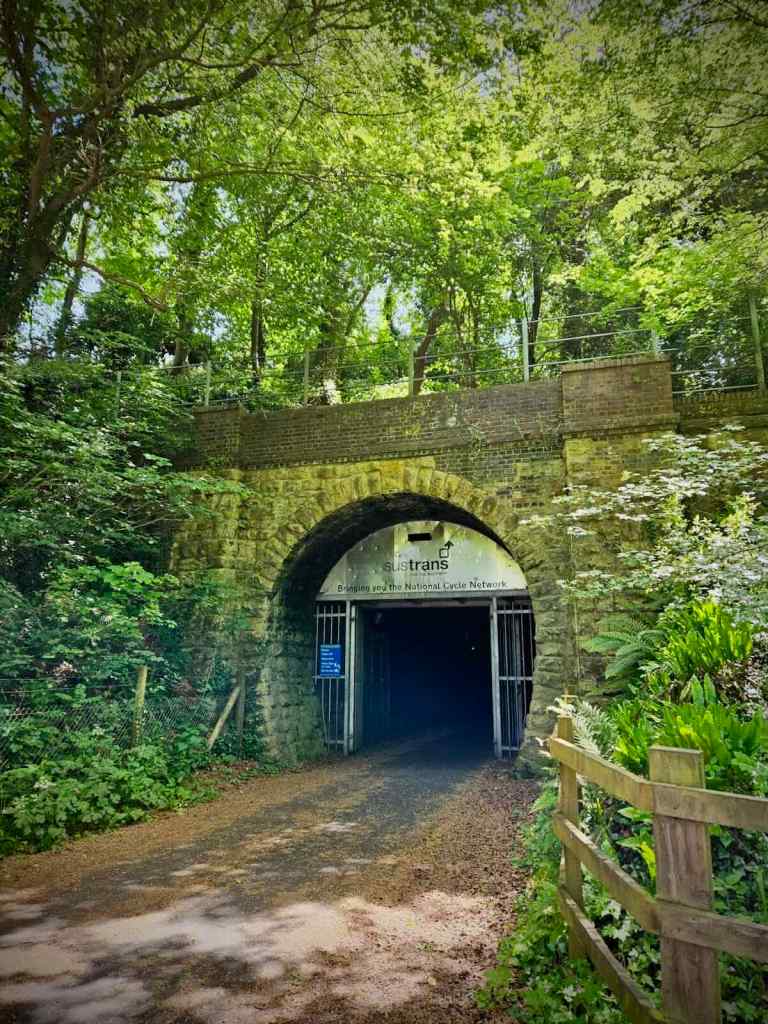
We entered the Combe Down Tunnel and made our way through its mile length. As we cycled through, there was lots of others cycling and walking through the tunnel as well, making the most of the fantastic route.
Leaving the Combe Down Tunnel, we next arrived at the Tucking Mill Viaduct, which has some pretty impressive views of the Tucking Mill Reservoir. It’s a shame that often when you’re on an impressive structure like this, you miss out on the best view of the structure itself.
We soon arrived at the point to leave the railway and change direction along Tucking Mill Lane. Though first of all, we found somewhere to stop (a large log) and have our sandwiches.

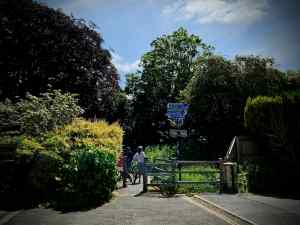







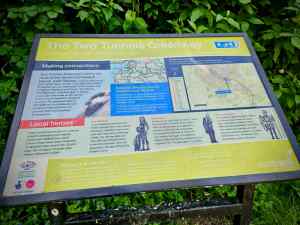






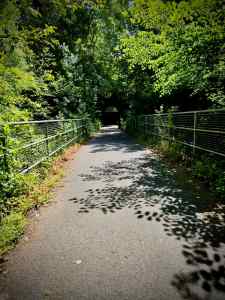







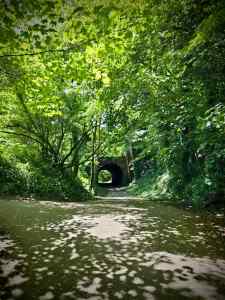
Kennet & Avon Canal
Following our lunch break, we got back on the bikes and continued along Tucking Mill Lane, towards Monkton Combe. At this point, we were riding along a fairly narrow and quiet country lane. There was also the odd steep section, which was something of a contrast to the consistent incline of a railway path.

Once through Monkton Combe, we turned right and onto a path towards Dundas Aqueduct, which we arrived at soon. The aqueduct is a very impressive structure, which carries the Kennet & Avon Canal over the River Avon and the Wessex Main Line railway. Completed in 1805, this structure is very much still in use today, and is a great spot to stop and take in the views of the river.
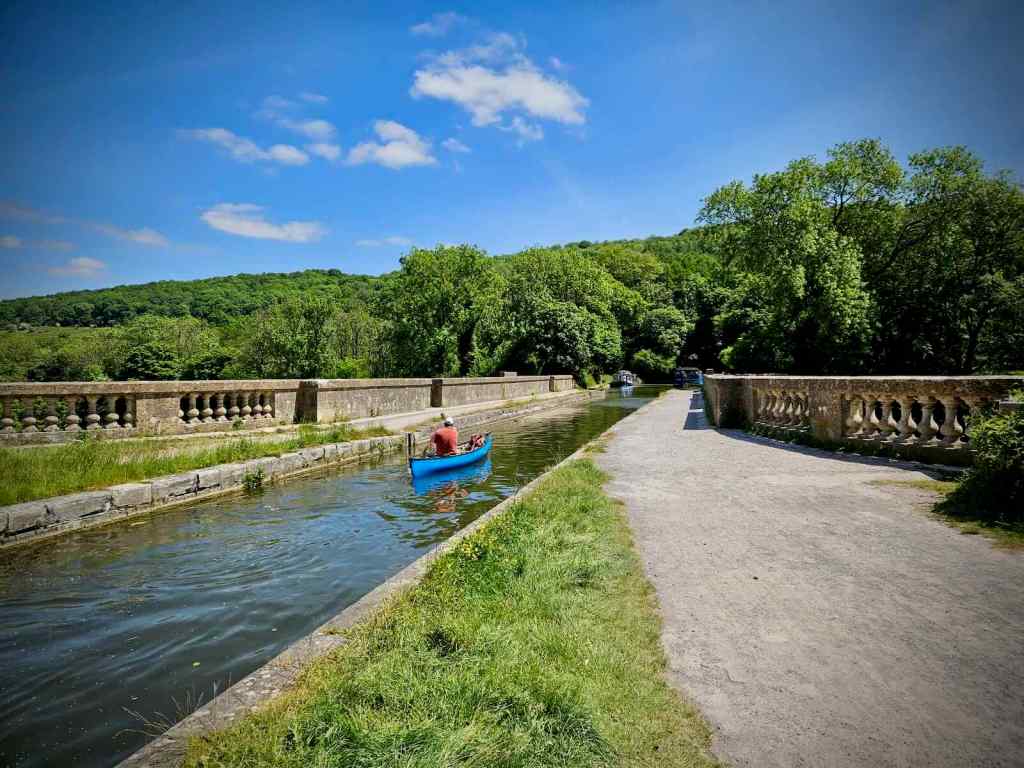
Next to the Dundas Aqueduct is Brassknocker Basin, which is again part of the Kennet & Avon Canal. This was busy with people in their boats and others by the side of the canal, taking in the sun on what was a glorious day.

We now continued along the path next to the Kennet & Avon Canal, which we do until we were back in Bath. The path itself had an unsealed, rough stone surface of variable width. For the number of people we saw using it on that day, it was adequate, but not amazing.

The scenery around the canal was very green and picturesque. Very different to the often industrial Bridgewater Canal that we use often back home. We passed lots of moored up boats, as well as a few navigating the canal. There were a few people out walking along the path and the odd person cycling.

We carried on along the canal in the blistering sun, until we reached Cafe on the Barge in Bathampton, where it only seemed right to stop for the obligatory ice cream. With seating and shade under the trees, this was a perfect place to stop for a break.
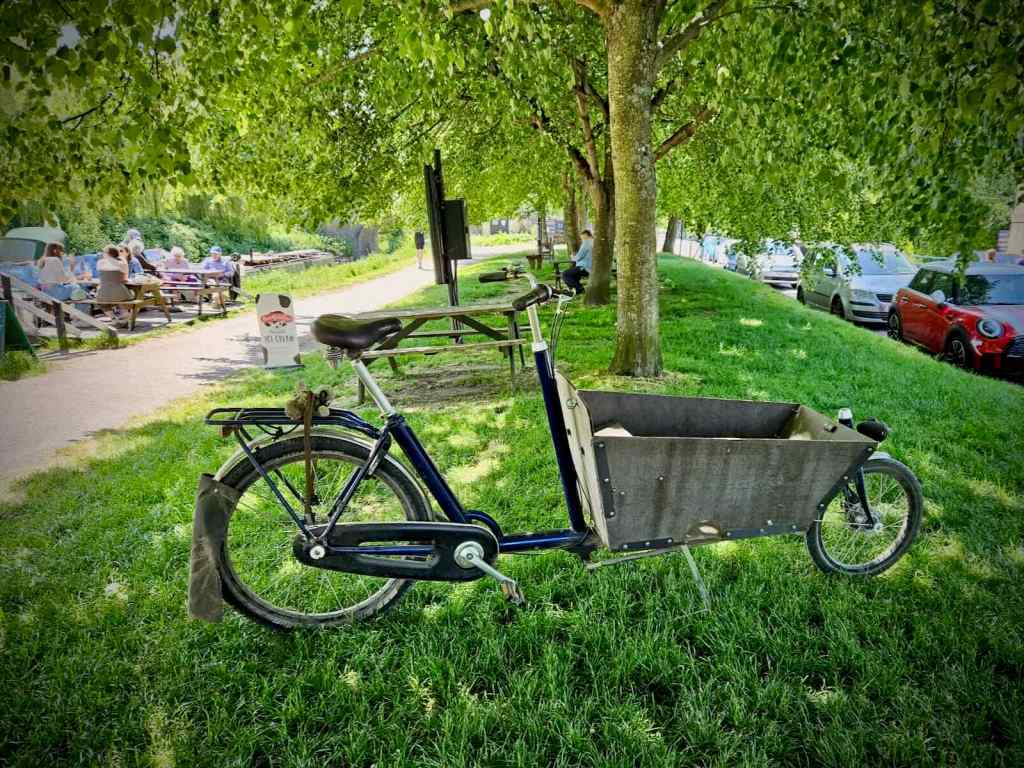
Feeling suitably refreshed, we climbed aboard our bikes and carried on along the canal. We were now on the stretch towards Bath, as the surroundings became less rural and more suburban as we continued.

We soon reached the outskirts of Bath, where the canal met the railway line. At this point, we were greeted with views of the hills of Bath, furnished with row upon row of stone terraces. A short distance from there, we arrived at Sydney Gardens, and the impressive bridge and tunnel leading up to it.

Sydney Gardens is the only remaining eighteenth-century pleasure gardens in the country apparently. Opening in 1795 and originally named Bath Vauxhall Gardens, after London’s Vauxhall Gardens, it was subsequently heavily altered with both the Kennet & Avon Canal and Great Western Railway dissecting the gardens.
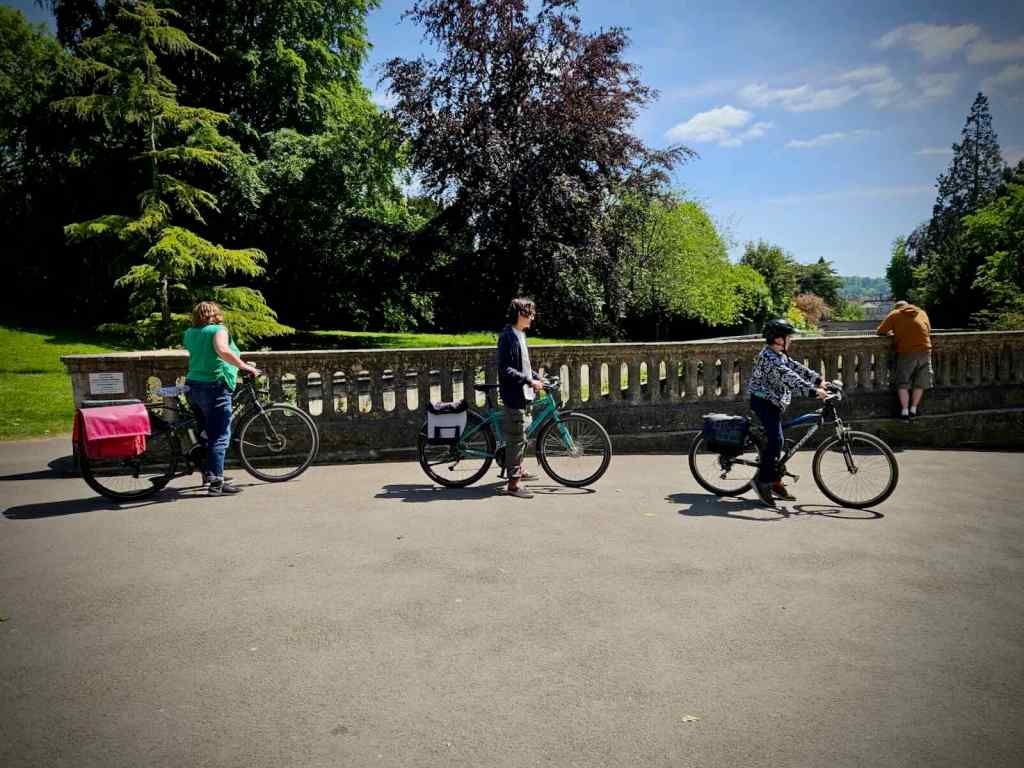
We paused briefly in Sydney Gardens, taking in the views, before setting off into Bath. We probably should have spent a bit longer there, but the others were keen to carry on and get the rider over with, with some members feeling a little tired!












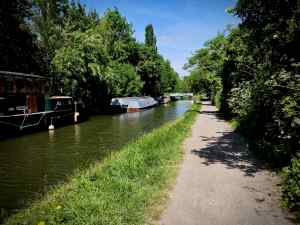



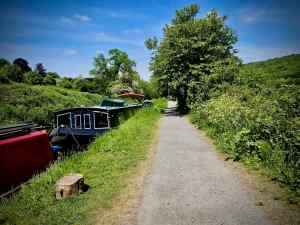





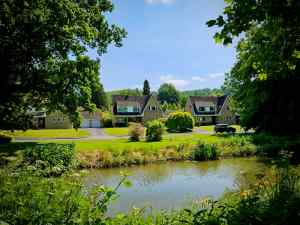
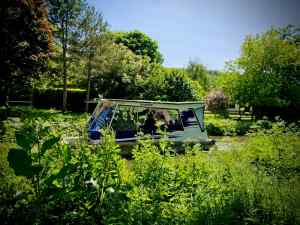













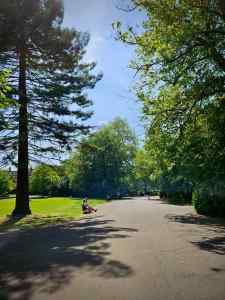

Bath
Setting out from Sydney Gardens, crossed over the road and made our way along Daniel Street and Henrietta Mews, then onto Henrietta Street. We then turned onto Argyle Street, which takes you across the famous Pulteney Bridge.
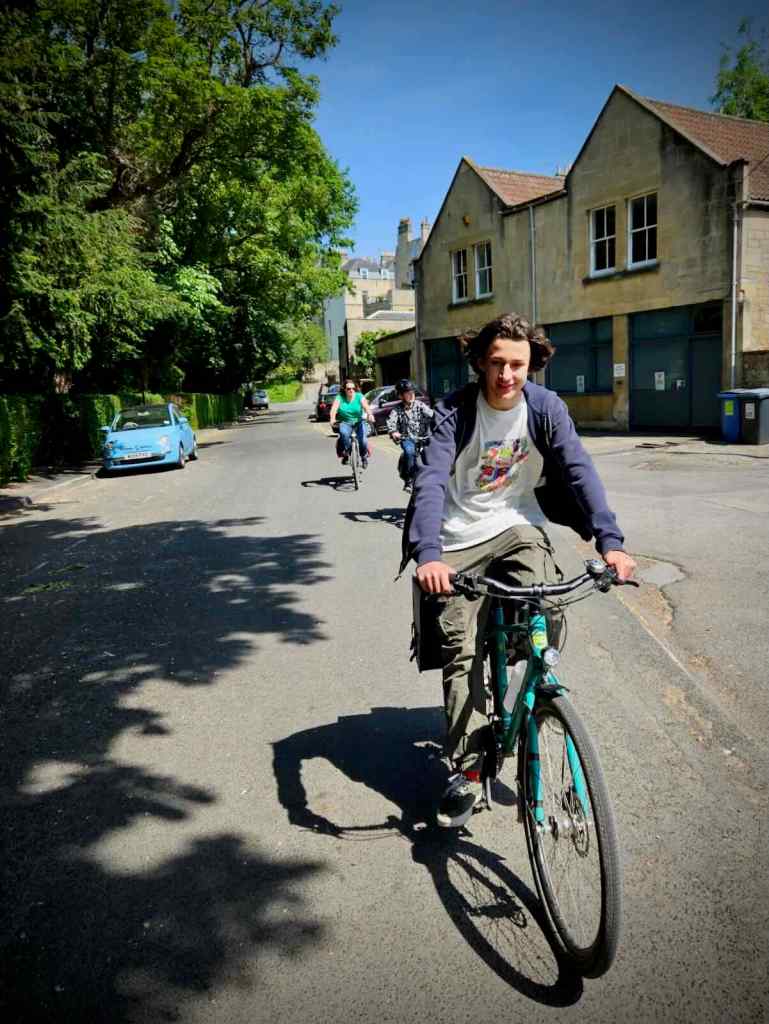
While Pulteney Bridge is an impressive structure to view from its surrounding, it’s not particularly impressive when you’re on the bridge. That’s largely because it’s hard to tell you’re actually on a bridge. We did stop round the corner, to get a better view and take a few photos.

From there, we meandered our way up to the Royal Crescent, via some of the quieter streets in the city and were rewarded with views of Bath’s impressive Georgian architecture and pleasant streets and squares.
Arriving at the Royal Crescent, we parked up and joined the many people who were there, making the most of the glorious afternoon sun. While the houses on the Royal Crescent might be the preserve of the rich, it’s good to see that us plebs are at least allowed on the lawn.

I have to say, the Royal Crescent is a really nice spot to spend time. The city centre in Manchester really lacks decent green spaces like this, that are well maintained and open to everyone, while having a good mix of people and feeling safe.

After a break on the lawn, we made our way down to the River Avon Trail, to make our way back to our holiday home. This took us along Upper Bristol Road, which was pretty much on the only dedicated, on-road cycling infrastructure we saw.
















